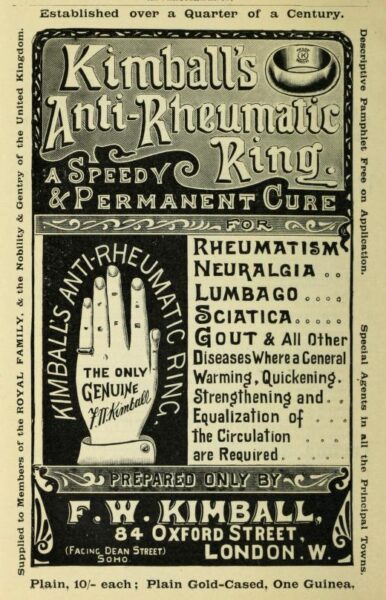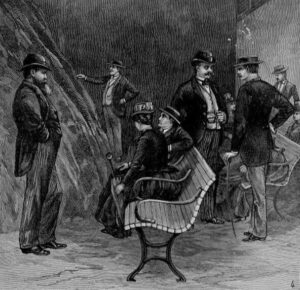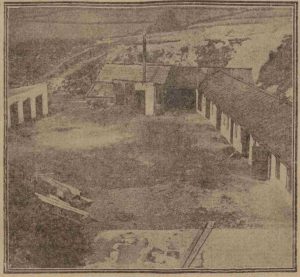 The Aperitive Vase, a cure for constipation, is somewhat coyly advertised here, but adverts from earlier in the 1840s left less to the imagination:
The Aperitive Vase, a cure for constipation, is somewhat coyly advertised here, but adverts from earlier in the 1840s left less to the imagination:
The apparatus is a fountain in miniature, so small that when filled it may be concealed in the pocket until it can be used conveniently; when, by an hydraulic double-action within it, the water which it contains is propelled into the bowels, and instantly procures the desired relief, as effectively as a dose of opening medicine. The Fountain may be used by the most nervous lady without the knowledge or aid of any second person. (The Era, Aug 13 1843)
Image: Detail from Réaction. Distraction. Précipitation by Charles Philipon, 1850s. Courtesy of the US National Library of Medicine.
T H E U S E O F W A T E R as an aperient is neither
distasteful nor injurious as opening medicines are: its operation
is instantaneous, and without the slightest uneasiness; consequently
it is found to be a remedy preferable to every other for Indigestion,
Costiveness, Bile, &c. But those who desire to relieve effectually
the stomach and bowels by this natural physic, and to resort to it
comfortably, must apply it with the APERITIVE VASE, constructed
for invalids and ladies, and sold only at Scott and Llewelyn’s Medical
Repository, 369, Strand, the third house from Exeter Hall. Also,
SONIFERS, by which a deaf person may magnify voices to the pitch
at which he hears distinctly. Descriptions sent post free, on receipt of
two letter stamps.
Source: The Daily News (London) Saturday 31 January 1846
Dr Scott and a business associate, Mr Pine, revealed the extent of their medical knowledge in 1844 when a 5-year-old boy was rushed to their premises after falling into the river near Waterloo Bridge. According to the inquest report in the Medical Times (6 July 1844), Scott ‘looked at the child, and exclaimed— “Be off with you—take it to Charing Cross Hospital.”‘ The rescuers set off the for the hospital but the child died on the way.
Now giving due force to these circumstances, said the Medical Times in reference to Scott’s advertisements, but more especially to the singular rejection of this poor child for treatment, and supposing for a moment that Dr. Scott, like thousands of others, really has no other title to doctorship but his own sovereign will, what a significant instance we have before us of the mischief of empirical pretensions.



Wish was still around, haha! Great site!
A Monoject-412 syringe, cheaply bought on Amazon.com does the same thing. And it really does work too!
Ha ha! Glad you like the site, and thanks for commenting.
Hey, this actually does work! A Monoject-412 syringe does the same thing, and it really does work.